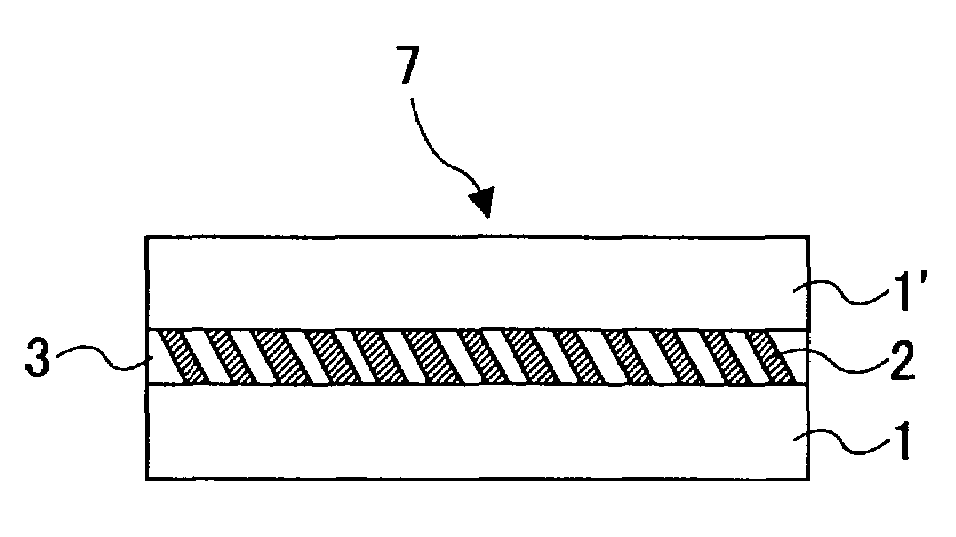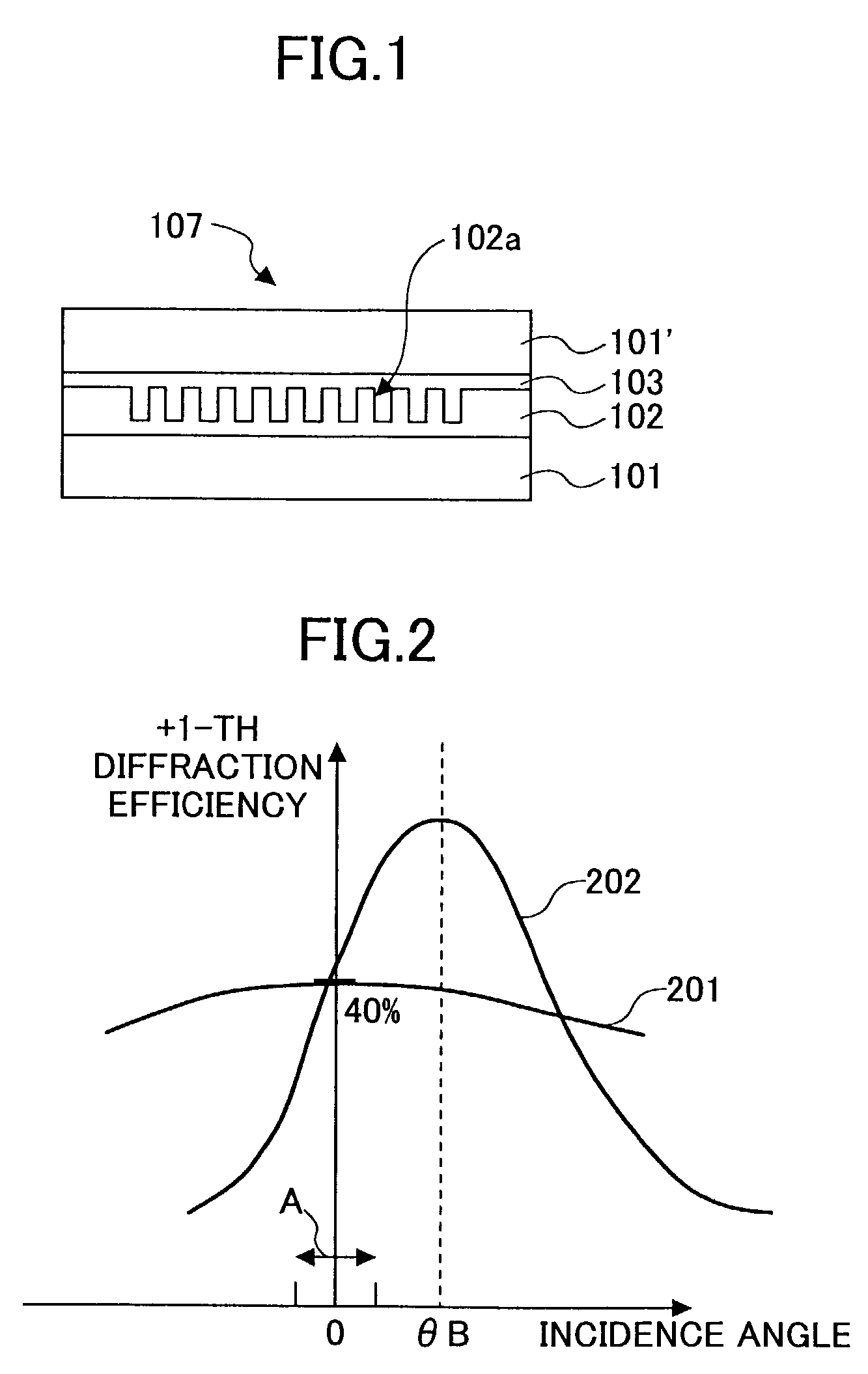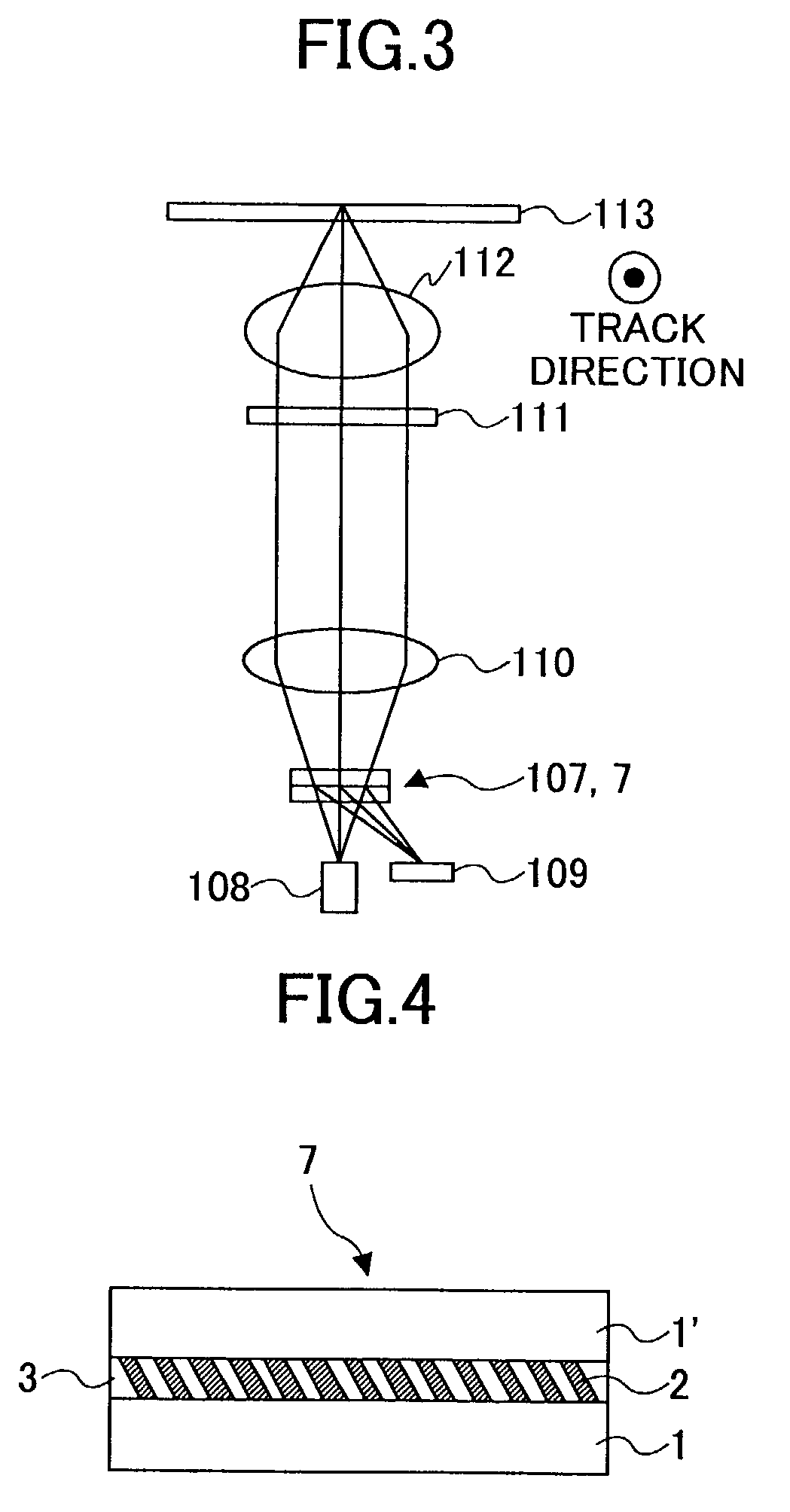Diffraction grating, light source unit applying the same therein, and optical head device employing the same
a technology of light source unit and optical head, applied in the field of optical head, can solve the problems of diffraction efficiency, offset in push-pull signal, and one problem, and achieve the effect of increasing the optical energy utilizabl
- Summary
- Abstract
- Description
- Claims
- Application Information
AI Technical Summary
Benefits of technology
Problems solved by technology
Method used
Image
Examples
third embodiment
[0075]the present invention will now be described. When applying the above-mentioned polarization diffraction grating as a beam-splitting device in an optical head device, in order to prevent creation of an offset in the push-pull signal which is used as a tracking signal, it is preferable that the peak of diffraction efficiency should occur at an angle of 0 degrees, i.e., at a time of the right-angle or perpendicular beam incidence.
[0076]In order to cause the peak of diffraction efficiency to occur at a time of perpendicular beam incidence as the Bragg angle, assuming that the diffraction angle α in the diffraction grating medium at the time of perpendicular beam incidence is expressed as α=α0, as shown in FIG. 5B and FIG. 7, a setting should be made such that θB′=0 in the above-mentioned formula (3),
α0−2β=0,
and thus, when,
β=α0 / 2 (4)
the +1-th diffraction efficiency has a peak at the occasion of the perpendicular beam incidence.
[0077]The curve 43 of FIG. 8 denotes the +1-th diffrac...
fourth embodiment
[0081]the present invention will now be described. As shown in FIG. 3, when the polarization diffraction grating 7 is disposed in a convergent beam reflected by an optical recording medium, since the incident beam includes various incidence angles as shown in FIG. 5B, i.e., incident beam elements 0, 1 and 2, for example, it becomes not possible to obtain a peak diffraction efficiency for each of all elements of the incident beam merely by applying a representative single incident angle to the formula (4). In order to obtain the peak diffraction efficiency for each of all elements of the incident beam, the inclination angles of respective rectangular elements of the patterned-indented shape of the polarization diffraction grating should be set differently depending on the actual incident angles of respective beam elements.
[0082]That is, in FIG. 5B, for an area for the incident beam element 0, as has been described in the description of the third embodiment above, in the diffraction g...
ninth embodiment
[0117]FIG. 13 shows an outline configuration of a two-wavelength optical head device according to the present invention employing the polarization diffraction grating 7 according to any of the embodiments mentioned above according to the present invention. As shown, this optical head device includes a light source 8 made of a semiconductor laser or so for the wavelength of 780 nm, and another light source 8′ made of a semiconductor laser or so for the wavelength of 660 nm. Other than them, the optical head device includes the polarization diffraction grating 7 according to the embodiment of the present invention, a collimator lens 10, a ¼-wavelength plate 11, an object lens 12 which has undergone aberration correction for the two wavelengths of 780 nm and 660 nm, and a light detection device 9 made of a multi-beam-incidence-area-divided photodiode or so, and performs recording / reproduction of information on / from an optical recording medium (optical disk) 13.
[0118]Since this two-wave...
PUM
| Property | Measurement | Unit |
|---|---|---|
| incidence angle | aaaaa | aaaaa |
| Bragg angle | aaaaa | aaaaa |
| wavelength | aaaaa | aaaaa |
Abstract
Description
Claims
Application Information
 Login to View More
Login to View More - R&D
- Intellectual Property
- Life Sciences
- Materials
- Tech Scout
- Unparalleled Data Quality
- Higher Quality Content
- 60% Fewer Hallucinations
Browse by: Latest US Patents, China's latest patents, Technical Efficacy Thesaurus, Application Domain, Technology Topic, Popular Technical Reports.
© 2025 PatSnap. All rights reserved.Legal|Privacy policy|Modern Slavery Act Transparency Statement|Sitemap|About US| Contact US: help@patsnap.com



